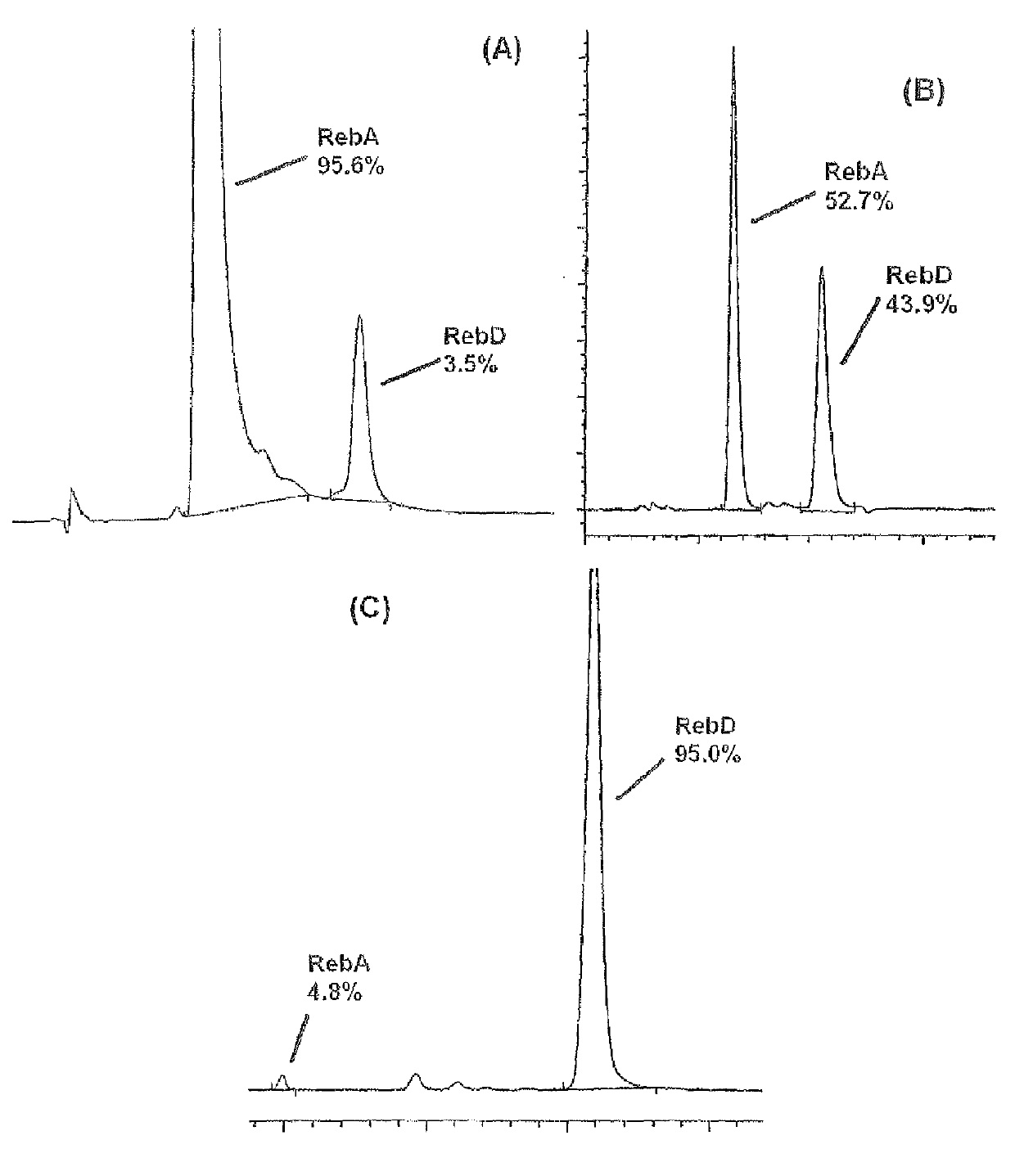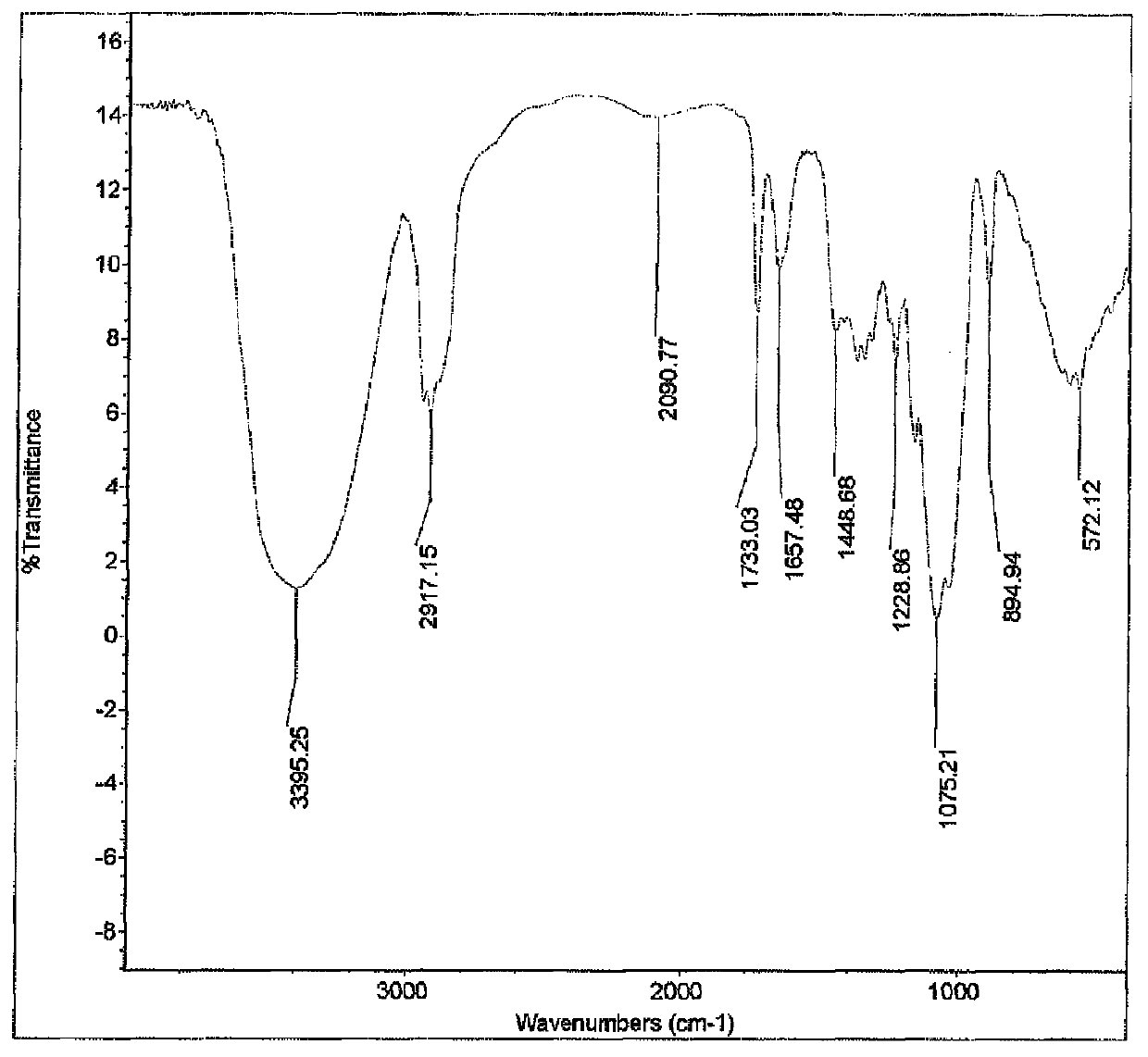High-purity rebaudioside D and low-calorie cake containing the same
a technology of rebaudioside and high-purity stevia, which is applied in the field of rebaudioside d from stevia rebaudiana bertoni plant extract and further to low-calorie cake, can solve the problems of unbalanced temporal and/or flavor profile, difficult competition among sugar and non-sugar high-potency sweeteners, and associated undesirable tastes of non-caloric or low-caloric sweeteners, and achieves excellen
- Summary
- Abstract
- Description
- Claims
- Application Information
AI Technical Summary
Benefits of technology
Problems solved by technology
Method used
Image
Examples
example 1
Purification of Rebaudioside D
[0233]One kg of Stevia extract containing Stevia extract containing Stevioside-25.40%, Rebaudioside A-59.14%, Rebaudioside C-9.71%, Rebaudioside D-2.03%, Rebaudioside B-0.56%, Rebaudioside E-0.68%, Rebaudioside F-1.02%, Steviolbioside-0.11%, and Dulcoside A-1.35% was dissolved in 3000 ml of 95% ethyl alcohol and maintained at 80° C. for 35 min, and then at 15° C. for 12 hours with agitation. When temperature reached 22° C., 1.0% of highly purified Rebaudioside A was added to the reaction mixture as starter to initiate crystallization.
[0234]Precipitate was separated by filtration and washed with about two volumes of 99.5% ethanol.
[0235]The yield of crystalline material was 47.1% with content of Stevioside (8.8%), Rebaudioside A (81.7%), Rebaudioside C (5.1%), Rebaudioside D (3.3%), Rebaudioside B (0.1%), Rebaudioside E (0.3%), Rebaudioside F (0.4%), and Dulcoside A (0.3%).
[0236]The remaining solution contains Stevioside (40.2%), Rebaudioside A (39.1%), R...
example 2
Low-Calorie Orange Juice Drink
[0253]60 g of concentrated orange juice were mixed with 1.1 g of citric acid, 0.24 g of vitamin C, 1.0 g of orange essence, 0.76 g of Rebaudioside D and water, to create a homogeneously dissolved mixture of 1000 mL total amount. Then, the mixture was pasteurized for a period of 20 seconds at about 95° C. in order to prepare an orange juice similar to one made by conventional method. The product had excellent taste profile.
[0254]Juices from other fruits, such as apple, lemon, apricot, cherry, pineapple, etc. can be prepared using the same approach.
example 3
Ice-Cream
[0255]1.50 kg of whole milk was heated to 45° C., and 300 grams of milk cream, 100 grams of tagatose, 90 grams of sorbitol, 6 grams of carrageenan as a stabilizer, 3 grams of polysorbate-80 as an emulsifier, and 1.0 gram of Rebaudioside D as in EXAMPLE 10, were added into the milk and stirred until the ingredients completely dissolved. The mixture then was pasteurized at a temperature of 80° C. for 25 seconds. After homogenization the samples were kept at a temperature of 4° C. for 24 hours to complete the aging process. Vanilla flavor (1.0% of the mixture weight) and coloring (0.025% of the mixture weight) are added into the mixture after aging. The mixture was then transferred to ice cream maker to produce ice cream automatically. Samples of produced ice creams were transferred to seal containers and were kept in the freezer at a temperature of −18° C.
[0256]The application of sweeteners does not affect the physicochemical properties of ice cream, as well as the overall at...
PUM
 Login to View More
Login to View More Abstract
Description
Claims
Application Information
 Login to View More
Login to View More - R&D
- Intellectual Property
- Life Sciences
- Materials
- Tech Scout
- Unparalleled Data Quality
- Higher Quality Content
- 60% Fewer Hallucinations
Browse by: Latest US Patents, China's latest patents, Technical Efficacy Thesaurus, Application Domain, Technology Topic, Popular Technical Reports.
© 2025 PatSnap. All rights reserved.Legal|Privacy policy|Modern Slavery Act Transparency Statement|Sitemap|About US| Contact US: help@patsnap.com


